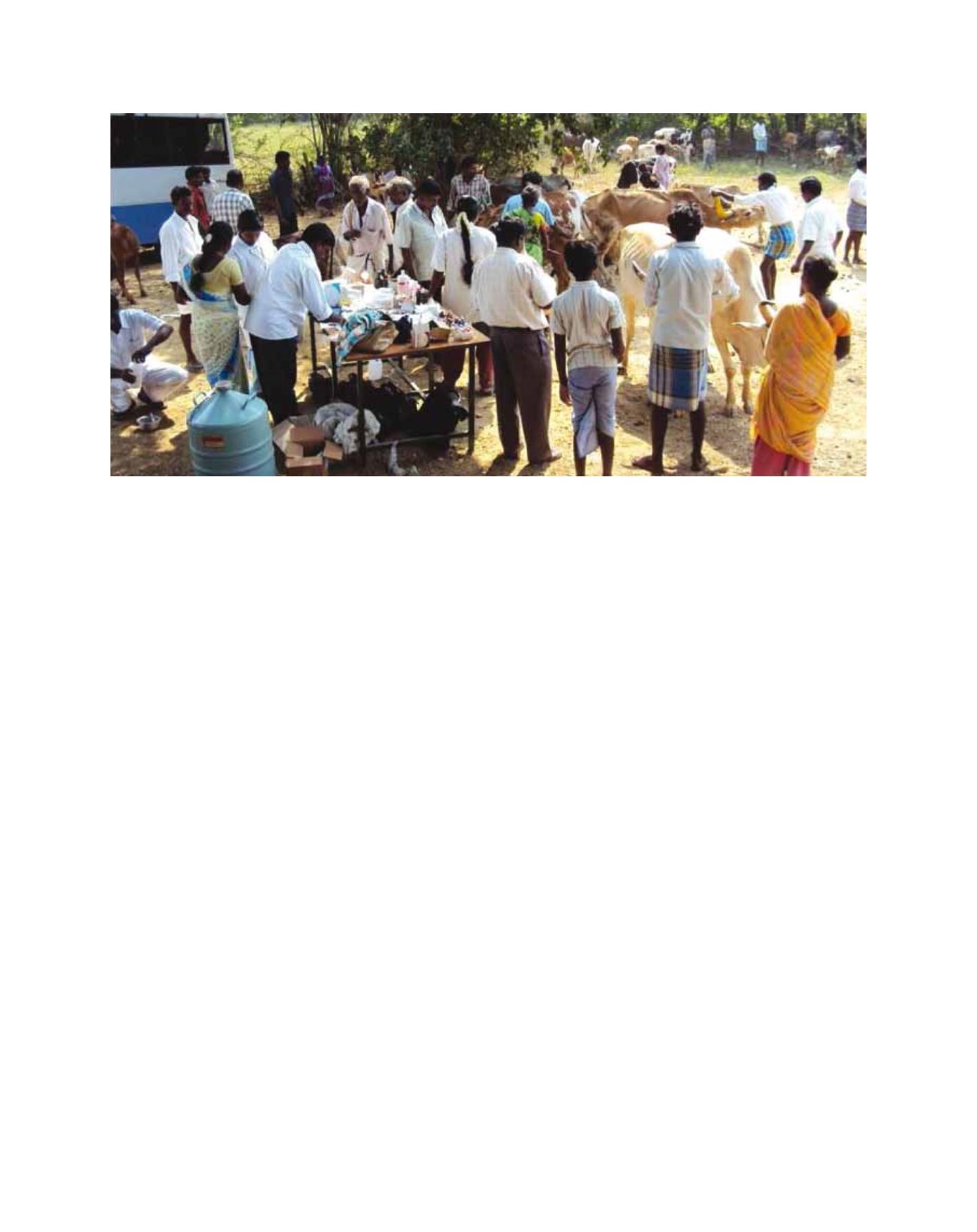

[
] 22
A
griculture
production systems including agriculture, horticulture and animal
husbandry. An exhibition for schoolchildren was also arranged to
raise their awareness about the future impact of weather and climate
on agriculture and daily life. Various weather instruments were
displayed, such as rain gauges, weathervanes, sunshine recorders and
maximum and minimum air temperature thermometers. The exhibi-
tions also include posters containing important information about
weather forecast application and reliability and the impact of climate
change. Charts are displayed showing agrometeorological research
activities in the station, climatic characterization of the region, the
onset date of monsoon rainfall in the region, the start of the agromet
advisory service unit, medium-range weather forecasts, the prepara-
tion of the agromet advisory bulletin and a selection of suitable crops
based on the time of monsoon rainfall onset and the impact of climate
change. Farmers have visited the agricultural meteorological observa-
tory to get acquainted with the weather instruments, and to be shown
the automatic weather station.
Capacities
In each AMFU a Nodal Officer (NO) and a Technical Officer (TO), who
have significant experience in agrometeorology, work on AAS. They are
given special training in IMD at the time of setting up the AMFUs, and
IMD organizes a 21-day AMFU training course covering all agromete-
orological information.
The Farmer Awareness Programme includes extensive discussions on
how farmers can blend and use traditional knowledge and indigenous
skills for weather forecasting with modern forecasting methods in differ-
ent aspects of agricultural operations to increase the crop yield. A regular
survey made for targeted and non-targeted farmers shows that they are
more aware and that they trust these services, ultimately producingmore
agricultural output by using the information provided in the programme.
Farmers’ views
One progressive farmer shared his experience about how he had
benefited from the agromet advisory issued by the AAS of AMFU
Sonitpur, Assam. He described how he was able to save
a mature potato crop worth Rs300,000 from damage due
to heavy rainfall after receiving a forecast of heavy rainfall
well in advance. Another said that he regularly followed
the advisory issued by AMFU Pune, Maharashtra and his
crop yield had increased by 10-15 per cent compared to
other farmers who did not follow the advisory.
Farmers are able to ask questions about the forecasts,
services and the effects of climate change, which the NO
and TO answer in their regional language. Experts from
different fields also answer farmers’ queries, and some
important messages have been communicated to the
farmers through this programme:
• Farmers should take advantage of such awareness
programmes to minimize crop loss due to
unexpected climatic hazards and to help increase
agricultural production
• Farmers are told how to pre-plan farm operations and
cropping by getting weather information in advance
• Farmers are requested to keep in touch with
KVK regarding their problems, to opt for newer
technologies which can sustain productivity levels
without affecting climate, and to visit the KVK
farm to see how weather data such as temperature,
rainfall and relative humidity is recorded by the
automatic weather station
• Farmers are asked to keep in touch with the university
through the Agriculture Fair, Farmers’ Club meetings
and the Farmers’ Gathering so they can maximize their
knowledge about new research outcomes and apply this
knowledge on their fields
• Farmers should adopt poultry farming and fisheries
as well as dairy and fruit production with agricultural
crops to generate extra income; they are encouraged
to work through self-help groups and take advantages
Image: India Meteorological Department
Farming communities are shown a variety of weather and climate measuring tools to familiarize them with agrometeorological advisory services
















